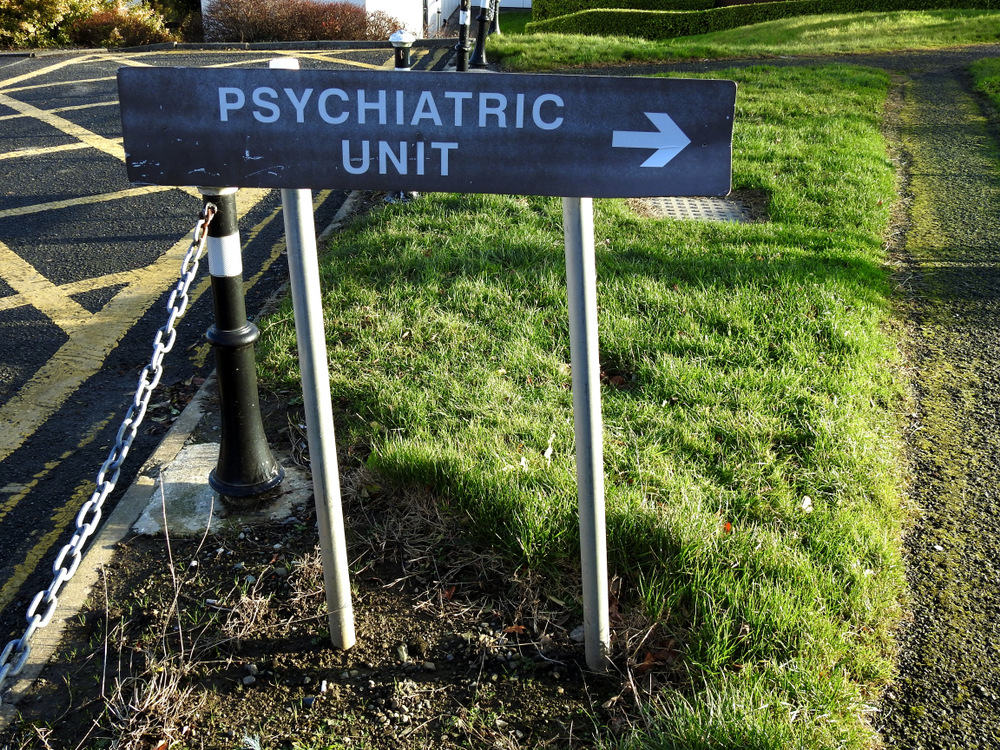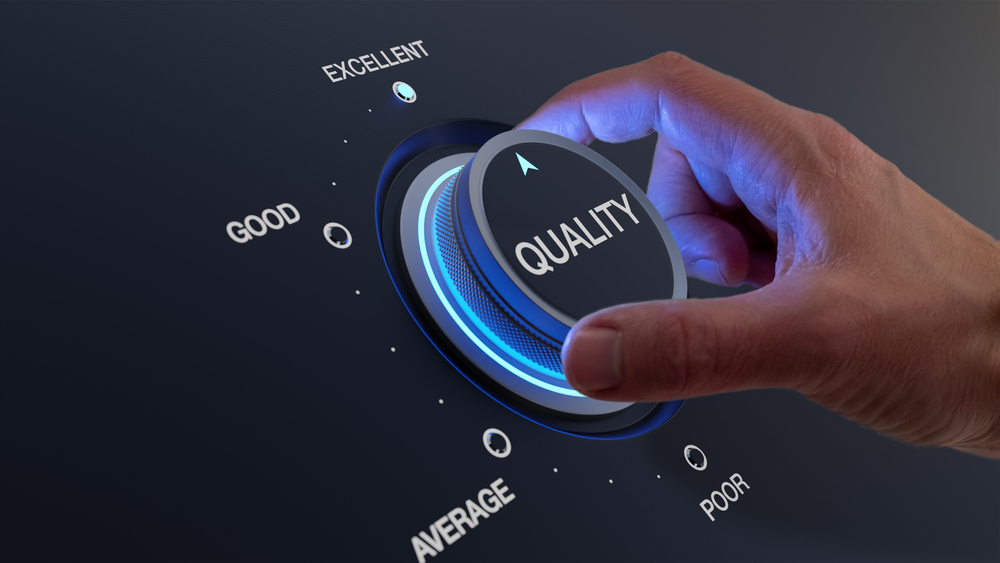[ad_1]
 The NHS is increasingly turning to technology as a solution to productivity and workforce issues. We are increasingly seeing the development and introduction of technologies that hope to improve mental health in mental health services (see MindTech as an example). However, technologies being introduced into inpatient mental health settings are controversial, such as body-worn cameras and surveillance cameras.
The NHS is increasingly turning to technology as a solution to productivity and workforce issues. We are increasingly seeing the development and introduction of technologies that hope to improve mental health in mental health services (see MindTech as an example). However, technologies being introduced into inpatient mental health settings are controversial, such as body-worn cameras and surveillance cameras.
In acute mental health wards, the incidence of self-harm has increased in recent years and is widely reported as the most frequent patient safety event (Woodnut et al., 2024).
The present study Kekic et al., (2024) reported an evaluation of whether a ‘vision-based patient monitoring system’ (VBPMS), reduced self-harm in patients’ bedrooms.
Technology, it’s called exivision, It uses infra-red sensitive cameras in people’s bedrooms to help staff visually confirm that a person is safe, measuring vital signs such as their pulse and breathing rate without disturbing their sleep.
– Retrospective news article, 30 November 2023

In acute mental health wards, the incidence of self-harm has increased in recent years and is widely reported as the most frequent patient safety event.
methods
Data were analyzed from five quasi-experimental (before/after) studies involving 12 intervention and 7 control wards in five NHS England mental health trusts. One study was considered research with associated ethical approval, and four studies were service evaluations. Control wards were assigned in four studies, but not in the fifth study.
A VBPMS intervention “An infrared-sensitive camera, housed in a secure unit in the patient’s bedroom”. But it’s more than just a simple surveillance camera, the output from the camera feeds into a computer system that measures pulse and breathing rates, as well as “Real-Time Location-Based Alerts” So staff can see if the patient gets out of bed or spends too much time in the en-suite bathroom. The system can provide activity data and vital signs summaries to help clinicians in their planning and decision making. It also helps the staff “Review anonymized (obscured) footage of non-witnessed incidents to inform care responses and facilitate accurate documentation of case notes”,
Self-harm rates were calculated as the number of incidents per 1,000 occupied days. Change in pre/post incidence was calculated including confidence intervals by fixed-effect meta-analysis.
Results
Data for 12 wards of 5 trusts is presented. Five of these were female-only wards, one male and six mixed (five of which were in Trust E). Data was collected between 1 January 2018 and 31 March 2022. Four trusts (AD) were assigned 7 control groups, one trust (E) had no controls.
In Trust A (already reported in Ndebele et al., 2023), 67% of patients consented to participate. Among those who were incompetent, their psychiatrist decided whether they could participate. Cameras are turned off for those who don’t agree. The fact that two-thirds of patients in an acute mental health ward consented to this type of study. Consent was assumed (or decided by clinicians in the case of objections) by BE for trusts as this study was classed as a service evaluation by NHS trusts. Data were not collected on the number of patient/caregiver objections to the study.
Both increases and decreases in bedroom self-harm incident rates were reported between the pre- and post-intervention periods in the intervention ward (range: −53.4% to 58.0%). Results were calculated based on the relative percentage change for AD of trusts and Trust E, which had five mixed wards. The percentage change for Trust E was excluded from the combined analysis.
There was considerable variation in the incidence of self-harm between trusts and wards (1.32 to 43.9 incidents per 1,000 bed days). This is also true of the relative change reported in incidence, pre- and post-intervention. None of the ward-specific risk values were statistically significant.
When the results from the trusts’ AD were combined, they showed a statistically significant reduction in the incidence of self-harm of 39% (95% CI 7% to 60%). However, when Trust 3 was excluded, due to its unusually low baseline incidence, the composite result was not statistically significant.
The evaluation periods of the control group wards used a different time frame and due to the high variation in rates, the average of the wards was calculated and used in the analysis for one trust. In another trust, the same control ward was used for both intervention wards.
Information on the method or severity of self-harm was not reported, nor were the overall incidence rates of self-harm on the wards.

This is flawed research that combines disparate data from different wards and NHS trusts.
The end
The researchers claim that their study shows that the Oxehealth patient monitoring system can be used to improve patient safety in mental health hospitals. However, this research does not reliably prove this.
The researchers highlight the limitations of their own research:
There was large patient-to-patient variation in self-harm rates—especially for a control ward at Trust C—making it difficult to detect statistically significant reductions in self-harm rates by ward.
A meta-analysis showed a significant reduction in bedroom self-harm incidents, but the pooled statistics should be interpreted with caution because of the relatively small number of wards included (n= 7) and between-study nuances in methodologies (of particular importance was that Trust A obtained informed consent for research, whereas Trusts DE participated in service evaluations).

The researchers claim that their study shows that the Oxehealth patient monitoring system can be used to improve patient safety in mental health hospitals. However, this research does not reliably prove this.
limitations
Of the 45 studies I’ve critiqued for The Mental Elf over the past decade, this one has been the most challenging. Admittedly, the intervention is controversial, but my concerns are mostly with the study design and the resulting impact on transparency. For example, there is no pre-study registration in ISRCTN. It is unclear about the control wards, for example, whether they were matched by gender and whether there was a random procedure in their selection. Some wards share a single control ward and others have no controls at all, adding to the confusion.
There is a significant risk of selection bias in the studies. Therefore, there are likely to be significant differences between the study participants and the real-world population. As noted above, there is clear evidence of heterogeneity between studies in terms of baseline events and observed intervention effects.
The approach to analysis appears creative, particularly the use of different time periods, control averages calculated by wards due to variation, and fifteen ‘outliers’ excluded without sufficient detail to understand how this may have affected the results.
We need to test interventions in the real world and encourage the use of intention to analyze treatment, not exclude patients because they are too often exposed to self-harm or coercive interventions. Although the analysis with these data is reported to be included in the appendices.
Different time periods are important and they do not take into account seasonal/annual variation in self-harm and severity levels across wards. Because the focus of this study was only on bedrooms, we do not know whether self-harm increased elsewhere as a consequence of the cameras. There is no information about monitoring of all events to understand other unintended consequences of the intervention. This will be reported elsewhere, the paper said. Unusually, raw data were not available by the authors for others to undertake secondary analysis.
During the writing of this blog, concerns were raised about an undisclosed conflict of interest with the Editor of the Journal of Psychiatric and Mental Health Nursing (where this paper was published). There is also no clear mention of the study funder. It can only be assumed that the NHS is paying for the installation of cameras and enabling access to data routinely collected for commercial exploitation purposes.

There is an obvious conflict of interest with this study as all researchers are employed by a company (Oxehealth Limited) that sells patient monitoring systems to the NHS.
Discussions
There is no doubt that if clinical services are changed, an evaluation of the impact on patients should follow. However, incremental quality improvement appears to be making significant changes in clinical practice without consideration of ethical principles. This study adopted an informed consent procedure and no other ethical implications of the study or intervention were considered. I am concerned that implicit consent does not take into account capacity issues or select patients to withdraw from the study. This study approach is inconsistent with recommendations for the ethical conduct of quality improvement studies (Hunt et al., 2021). Ideally testing the efficacy of new interventions should be considered research and rigorously trialled. Since this study showed no post-post difference, is it more or less effective than observations or other interventions used in an acute mental health ward to keep patients safe?
The introduction of technology is not without controversy, and patient choice and consideration of human rights law appear to be central pillars we must uphold. We’re already seeing reports that the cameras aren’t keeping patients as safe as intended. Concerns about the impact of surveillance on mental health and human rights have been raised by Stopoxevision (2024). Although NHS England has promised that implementation should be legal by 2023, these are not taken into account in this study. However, using staff to visually monitor patients is not without problems. This role is often delegated to less trained staff or employed by banks/agencies.
Without conducting comprehensive and transparent studies that adhere to reporting standards, we cannot make claims about the effectiveness of interventions.

It is encouraging to see published research papers evaluating patient monitoring systems designed in many NHS trusts, but better quality studies are needed before we can be sure these systems are safe and effective.
Links
Primary paper
Kekic, M., Rose, A., Baker, C., & Bayley, D. (2024). Self-harm reduced in an acute mental health ward after implementation of a vision-based patient monitoring system: evidence from five NHS trusts. Journal of Psychiatric and Mental Health Nursing, 00, 1–9.
Other references
Hunt DF, Dunn M, Harrison G, et al (2021) Ethical considerations in quality improvement: key questions and a practical guide. BMJ Open Quality 2021.
Stopoxevision (2024) Presentation NHS England Digital Technologies Conference, Sheffield, available from
Woodnutt S, Hall S, Libberton P, Flynn M, Purvis Snowden J (2024) Analysis of England incidence and mental health nursing workforce data 2015–2022. Journal of Psychiatric and Mental Health Nursing.
[ad_2]